In this article, We will learn about new innovation in tiling industry! One of which helps you save electricity bill are ceramic roof solar tiles! So let’s begin:
- What are Solar Tiles and How Do They Work?
- Latest Innovations and Developments in Solar Tiles
- Pros and cons of solar
- Solar Installation Process and Costs of Solar Tiles
- How to Choose Best Solar tiles?
- How Solar Tiles are helps the Climate
- Where can I buy solar tiles for my project?
- BONUS : Here's what Elon Musk's New Solar tiles will look like
What are Solar Tiles and How Do They Work?
Solar tiles, also known as solar shingles or photovoltaic (PV) tiles, are a type of solar panel designed to resemble traditional roofing materials like asphalt shingles, slate, or terracotta tiles. They are made up of small solar cells that capture sunlight and convert it into electricity, allowing buildings to generate their own renewable energy while serving as part of the roof structure. Here’s how solar tiles typically work:
- Photovoltaic Cells: Solar tiles contain photovoltaic cells made of semiconductor materials (such as silicon) that can convert sunlight into electricity. These cells consist of layers that generate an electric current when exposed to sunlight.
- Sunlight Absorption: Just like traditional solar panels, solar tiles capture sunlight. They are installed on rooftops in a way that maximizes exposure to sunlight throughout the day.
- Electricity Generation: When sunlight strikes the surface of the solar tiles, the photovoltaic cells within them absorb photons (light particles). This absorption process generates an electric current through the photovoltaic effect, where electrons are knocked loose from atoms in the semiconductor material, creating a flow of electricity.
- Inverter and Power Distribution: The electricity generated by the solar tiles is initially in the form of direct current (DC). This power is then directed to an inverter, which converts it into alternating current (AC), suitable for use in homes or businesses. The AC electricity is then distributed to power electrical appliances and devices in the building or sent back to the grid if the system generates surplus energy.
- Integration with Roofing: Solar tiles are integrated into the roof structure during installation, replacing conventional roofing materials. They are designed to be durable, weather-resistant, and aesthetically similar to regular roofing materials to maintain the building’s appearance.
Latest Innovations and Developments in Solar Tiles
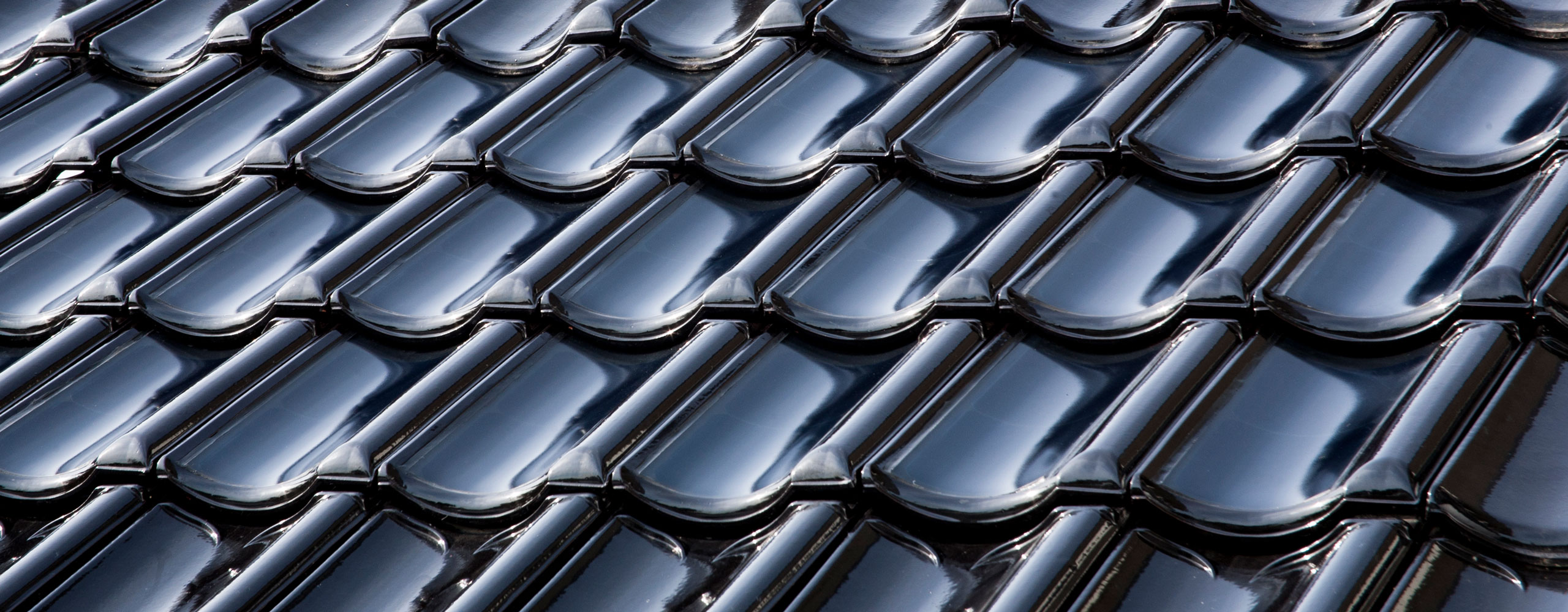
Link: FlexSol Solar Roof Tile
Solar roof shingles tiles, like the FlexSol Solar Roof Tile, are designed to blend seamlessly with the existing architecture of a building while generating electricity from sunlight. Here’s a simplified breakdown:
- Aesthetics and Design: Traditional solar panels didn’t match the look of most homes and this is alternative to traditional solar panels, affecting the overall appearance. Solar roof tiles, however, resemble regular roofing materials and maintain the building’s architectural style.
- Efficiency: These solar roof tiles covering entire roof are efficient and power your home because their curved design allows sunlight to consistently hit them at an optimal angle. Advanced technology and smart electronics further enhance their energy production, resulting in higher energy yields compared to standard solar panels.
- No Shading Issues: With integrated smart electronics, shading problems (which can decrease energy production) are eliminated. Each tile can be monitored individually to ensure maximum efficiency.
- Integration and Installation: The solar roof tiles are designed for easy installation and seamlessly integrate into traditional roofing methods. They’re flexible and don’t pose obstacles during installation. Roofers can install them using familiar techniques, reducing installation costs.
- Environmental Impact: These solar roof tiles aim for a lower environmental impact compared to conventional solar panel systems, providing a sustainable energy solution.
- Smart Monitoring: Users can monitor the entire system’s performance through a user-friendly app. The product allows for various system sizes and can either replace or complement existing roof tiles.
- Future Development: The FlexSol Solar Roof Tile is still in development. Interested individuals can stay updated on its progress by subscribing to the newsletter.
Additionally, FlexSol specializes in smart solar products, offering high-quality solutions that are not only functional but also visually appealing. They have expertise in solar pole products and bollards, maintaining high performance and durability.
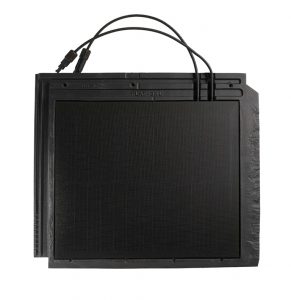
Link: SOLAR FLAT-5XL ceramic roof tile
The SOLAR FLAT-5XL ceramic roof tiles are specialized tiles designed to integrate solar energy systems seamlessly into the roof of a building. Here’s a simplified breakdown:
- Appearance: These roof tiles come in an entirely black (FULL-BLACK) finish that is anti-reflective, eliminating the typically visible connections found in traditional solar panels. They are designed to perfectly match the FLAT-5XL ceramic tile, maintaining the aesthetic appeal of the roof.
- Installation: The SOLAR FLAT-5XL ceramic tiles must be installed on ventilated roofs using a double batten system or an equivalent method. They are specifically designed for use with the FLAT-5XL ceramic tile to ensure proper installation and compatibility.
- Benefits and Integration: These tiles integrate solar panels within the ceramic structure, offering the advantages of ceramic roof tiles such as excellent water resistance without the risk of degradation or rust due to the solar panel integration.
- Perfect Integration: The installation of the SOLAR FLAT-5XL tiles and other ceramic accessories ensures a seamless integration into the roof or facade of the building, maintaining its structural and aesthetic integrity.
- Variants and Specifications: The SOLAR FLAT-5XL ceramic roof tiles come in two versions to suit different energy generation needs and available space. The tiles have specific dimensions and characteristics, including length, width, weight, number of units per square meter, recommended pitch, and useful measurements concerning their installation.
In essence, these SOLAR FLAT-5XL ceramic roof tiles are a specialized solution that combines the functionality of solar energy generation with the aesthetic appeal and structural benefits of ceramic roofing materials. They offer a sleek, integrated, and efficient way to harness solar power without compromising the visual appearance of the roof.https://youtu.be/ptyZ_uyD-NE
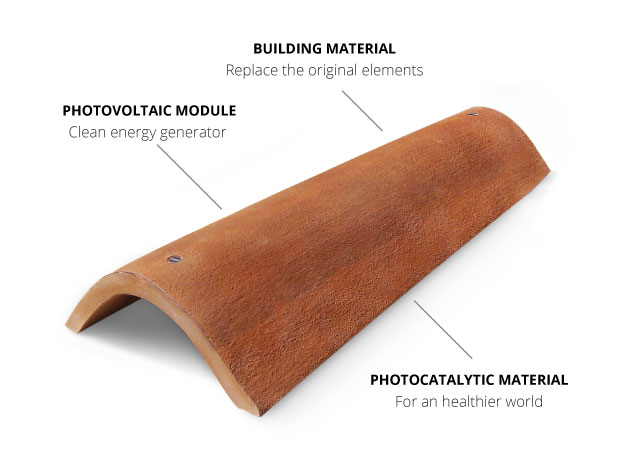
LINK: INVISIBLE SOLAR TILES
Invisible Solar represents a groundbreaking leap in photovoltaic technology, designed to seamlessly merge with diverse architectural materials while harnessing solar energy. Unlike conventional solar panels, these modules masquerade as conventional building elements like terracotta, stone, concrete, or wood, preserving the aesthetic integrity of structures while functioning as active architectural components. Beyond their energy-generating capabilities, these modules serve multiple roles, boasting features such as photocatalytic purification and self-cleaning abilities when exposed to light. With robust durability against environmental stressors and an eco-friendly composition derived from recyclable or natural materials, Invisible Solar stands as a pioneer in sustainable, integrated energy solutions.
The essence of Invisible Solar lies in its exceptional adaptability, mimicking the appearance of traditional building materials while embodying sophisticated solar technology. These modules have been meticulously engineered to harmonize aesthetically with various surfaces, ensuring they seamlessly integrate into roofs, walls, or pavements. Alongside their capacity to generate clean energy, they operate as protective layers and decorative elements. Moreover, their application in historic or culturally significant buildings emphasizes the technology’s potential to preserve architectural heritage without compromising the structural integrity or visual appeal of these cherished landmarks.
Functioning on a specialized polymeric compound, the innovation behind Invisible Solar optimizes photon absorption, housing standard monocrystalline silicon cells within its opaque yet light-permeable surface. These embedded photovoltaic cells covert absorbed sunlight into electricity, contributing to renewable energy production without conspicuous alterations to the appearance of buildings. Recognized by the Italian Ministry for its energy efficiency in preserving cultural heritage, Invisible Solar’s PV Rooftile has already commenced production, while promising prototypes like the PV Concrete Brick and Invisible Solar Wood await their debut, underscoring the technology’s commitment to advancement and versatility in sustainable architecture.
Operating from Italy, Dyaqua spearheads the development and implementation of Invisible Solar, emphasizing eco-conscious practices and architectural innovation. This visionary endeavor not only embraces renewable energy generation but also champions environmental health, fostering a paradigm shift in urban development by repurposing neglected structures and curbing urban sprawl. As the global pursuit for sustainable energy intensifies, Invisible Solar stands as a beacon, paving the way for transformative solar integration in architectural landscapes worldwide.
Pros and cons of solar
Advantages of Solar Tiles Over Traditional Tiles
Solar tiles present several advantages over traditional roofing tiles, revolutionizing the way we harness renewable energy while maintaining the integrity of architectural aesthetics. The innovative design of solar tiles, exemplified by products like the Invisible Solar Rooftile or SOLAR FLAT-5XL ceramic roof tiles, offers numerous benefits:
Aesthetic Integration: One of the most significant advantages of solar tiles is their seamless integration with conventional roofing materials. Unlike bulky, standalone solar panels, these tiles mimic the appearance of traditional tiles like terracotta, stone, or wood. This aesthetic blending preserves the building’s visual appeal, making them ideal for heritage assets or listed buildings without compromising on energy efficiency.
Enhanced Functionality: Solar tiles are not just energy generators; they serve as active architectural elements with multifaceted functionalities. They can harness solar energy while purifying the air through photocatalytic processes, ensuring self-cleaning properties, and exhibiting high resistance to environmental factors such as chemical solvents and harsh weather conditions.
Versatility and Adaptability: The adaptability of solar tiles to various building materials and surfaces is a significant advantage. They can seamlessly cover roofs, walls, or even pavements, allowing for widespread and efficient energy generation. Their versatility makes them an all-encompassing solution for energy production without compromising the structural integrity of buildings.
Sustainability and Eco-Friendliness: Solar tiles, such as those made by Dyaqua’s Invisible Solar, are constructed from recyclable or natural materials, promoting sustainability. Their production aligns with eco-friendly principles, utilizing non-toxic materials and encouraging reuse, thereby contributing to environmental conservation efforts.
Preservation of Cultural Heritage: Solar tiles cater to the unique needs of historic and cultural sites, offering an innovative solution that seamlessly integrates renewable energy production without altering the visual aspects of these heritage buildings. Recognized by government authorities for their potential to improve energy efficiency in cultural heritage, these tiles provide a viable option for maintaining the authenticity of historic structures while embracing clean energy.
Potential Challenges and Drawbacks of Solar Tiles
While solar tiles offer numerous benefits, they also come with certain challenges and drawbacks that should be considered:
Higher Initial Cost: The upfront cost of purchasing and installing solar tiles can be higher compared to traditional solar panels or conventional roofing materials. The integration of solar technology into building materials adds to the overall expense, making it a significant investment.
Complex Installation: Installing solar tiles can be more complex and labor-intensive than traditional solar panels. Proper installation requires skilled professionals to ensure correct placement, wiring, and integration into the existing roof structure. This complexity can contribute to higher installation costs.
Efficiency and Energy Output: Solar tiles might have slightly lower efficiency compared to standard solar panels due to their integrated design and limited surface area for solar cells. Consequently, they might generate less electricity per square foot compared to traditional solar panels.
Aesthetic Limitations: While designed to mimic traditional roofing materials, solar tiles might not perfectly match all architectural styles or preferences. The available styles, colors, and appearances of solar tiles could be limited, potentially affecting the visual cohesiveness of certain buildings.
Maintenance Challenges: Solar tiles, like any other roofing material, require periodic maintenance to ensure optimal performance. Dust, debris, or shading from nearby objects like trees can reduce their efficiency. Cleaning and maintenance might be more challenging due to the integrated nature of the tiles.
Compatibility and Retrofitting: Retrofitting existing roofs with solar tiles might pose challenges due to compatibility issues with the current roofing structure. In some cases, modifications or reinforcements might be necessary, adding complexity and cost to the installation process.
Long-Term Durability and Warranties: As a relatively newer technology, the long-term durability and performance of solar tiles are still being evaluated. Warranties and guarantees provided by manufacturers might differ, and it’s essential to consider the lifespan and reliability of the product.
Regulatory and Permitting Challenges: Local regulations, building codes, and permitting requirements can vary, affecting the installation of solar tiles. Obtaining necessary permits and complying with regulations can add time and complexity to the installation process.
Solar Installation Process and Costs of Solar Tiles
The installation process and costs of solar tiles can vary based on several factors, including the type of solar tile, the complexity of the installation, the size of the project, and local regulations. Here’s an overview of the typical installation process and associated costs for solar tiles:
Site Assessment and Planning: The installation process often begins with a site assessment by a professional installer. They evaluate the roof structure, its orientation to the sun, shading issues, and overall suitability for solar tile installation. Detailed planning follows, determining the number of tiles needed and the optimal placement for maximum sunlight exposure.
Roof Preparation: Before installing solar tiles, the roof may require preparation, which can include cleaning, repairing, or reinforcing the roof structure to ensure it can support the added weight of the solar tiles.
Installation of Solar Tiles: The installation involves mounting the solar tiles onto the roof surface. This process varies depending on the specific type of solar tile. Some tiles may require a specialized mounting system, while others integrate directly into the existing roofing structure. Each tile is interconnected to ensure the generation of electricity as a cohesive system.
Electrical Wiring and Connection: Once the tiles are in place, the electrical wiring is set up to connect the solar tiles to an inverter, which converts the generated DC electricity into usable AC electricity for the building. This connection also involves a system to either store excess energy in batteries or feed it back into the grid, depending on the setup.
Permitting and Inspections: Before and after installation, obtaining necessary permits and undergoing inspections may be required to ensure compliance with local building codes and regulations.
As for costs:
- Upfront Installation Cost: The initial cost of installing solar tiles typically includes the price of the tiles themselves, labor costs, equipment, permits, and any additional structural modifications. The cost can vary widely depending on the size of the installation, the complexity of the project, and the specific brand or type of solar tile used.
- Long-Term Savings: While the initial investment for solar tiles can be higher compared to traditional roofing materials, they offer long-term savings by generating free electricity once installed. This can significantly reduce or eliminate monthly electricity bills over time, providing a return on investment through energy savings.
It’s essential to consult with qualified solar installers or contractors to get accurate estimates tailored to your specific circumstances. Additionally, various financial incentives, tax credits, or rebates may be available in some regions to offset the initial costs of installing solar energy systems.
How to Choose Best Solar tiles?
Choosing the best solar tiles involves considering several crucial factors to ensure they meet your specific needs and preferences. Here’s a guide on how to choose the most suitable solar tiles for your project:
Energy Efficiency: Assess the energy efficiency and power output of the solar tiles. Look for tiles that offer high energy yields and optimal performance, ensuring maximum electricity generation based on the available roof space.
Aesthetics and Integration: Consider the visual appeal and how well the solar tiles blend with the existing roof or building design. Opt for tiles that mimic traditional roofing materials or offer various design options to ensure a seamless integration that complements the overall aesthetic of your property.
Durability and Warranty: Check the durability of the solar tiles, including their resistance to weather conditions, impact, and wear over time. Look for tiles with reliable warranties that cover both performance and longevity, providing you with peace of mind regarding their lifespan and maintenance.
Technological Features: Evaluate additional features or technological advancements offered by the solar tiles. Some tiles may come with smart monitoring systems, advanced photovoltaic technology, or integrated functionalities beyond energy generation, such as self-cleaning capabilities or environmental benefits.
Installation Requirements: Consider the installation process and any specific requirements needed for the solar tiles. Ensure that the chosen tiles align with your roof structure, installation method, and the expertise available for installation. Compatibility with existing roofing materials and ease of installation are essential factors to consider.
Brand Reputation and Reviews: Research and review the reputation of the brand or manufacturer offering the solar tiles. Read customer reviews, testimonials, and feedback regarding the performance, reliability, and customer service associated with the tiles.
Cost and Budget: Evaluate the overall cost, including the initial investment, installation expenses, and potential long-term savings on energy bills. Balance the upfront costs with the expected return on investment and the value provided by the chosen solar tiles.
Certifications and Compliance: Ensure that the solar tiles meet industry standards, certifications, and local regulations. Look for tiles certified for quality, safety, and compliance with relevant building codes in your area.
By carefully considering these factors and conducting thorough research, you can select the best solar tiles that align with your energy needs, architectural preferences, and long-term goals for sustainability and efficiency. Consulting with reputable solar professionals or installers can also provide valuable guidance in making an informed decision.
How Solar Tiles are helps the Climate
Solar tiles play a crucial role in mitigating climate change and aiding environmental conservation through several ways:
Reducing Greenhouse Gas Emissions: Solar tiles generate clean, renewable energy by converting sunlight into electricity without emitting greenhouse gases or pollutants. By relying on solar power instead of fossil fuels for electricity production, solar tiles help reduce carbon dioxide (CO2) and other harmful emissions that contribute to global warming and air pollution.
Promoting Renewable Energy Adoption: The use of solar tiles encourages the adoption of renewable energy sources. As more buildings integrate solar tiles into their structures, there’s a gradual shift away from reliance on non-renewable energy sources like coal, oil, and natural gas. This transition is vital for decreasing dependence on finite fossil fuel reserves and promoting sustainable energy practices.
Conservation of Natural Resources: Solar tiles utilize an abundant and virtually infinite resource—sunlight—to produce electricity. By harnessing solar energy, they contribute to the conservation of natural resources that would otherwise be depleted through the extraction and burning of fossil fuels.
Limiting Land Use and Habitat Disruption: Solar tiles are often installed on existing structures such as rooftops, minimizing the need for additional land use. Unlike large-scale solar farms that may require extensive land areas, the integration of solar tiles on buildings reduces habitat disruption and conserves land for ecological purposes.
Encouraging Energy Independence and Resilience: Solar tiles empower individuals, businesses, and communities to generate their own electricity. This decentralization of energy production promotes energy independence, reducing reliance on centralized power grids. It also enhances resilience against power outages or disruptions, especially in regions prone to extreme weather events or grid failures.
Contributing to Mitigation Efforts: Solar tiles, along with other renewable energy technologies, contribute to global efforts to mitigate climate change. As part of a broader strategy to reduce greenhouse gas emissions, their widespread adoption aids in meeting climate targets outlined in international agreements such as the Paris Agreement.
By enabling clean energy generation, reducing emissions, fostering energy independence, and conserving natural resources, solar tiles play a pivotal role in combating climate change and fostering a more sustainable future for our planet.
Where can I buy solar tiles for my project?
At Ramirro Ceramica, our commitment lies in supporting and promoting innovative tiling solutions that cater to our customers’ diverse needs. We understand the importance of staying at the forefront of the industry and are enthusiastic about offering cutting-edge products. Our primary goal is to assist our customers in selecting tiling options that not only enhance their projects aesthetically but also bring multifaceted benefits.
For those seeking the integration of solar technology into their roofing systems, we’re delighted to introduce three new brands offering ceramic solar tiles that marry functionality with aesthetics:
- FlexSol Solutions (https://flexsolsolutions.com/solar-roof-tile/): FlexSol Solutions offers state-of-the-art solar roof tiles that seamlessly blend with traditional roofing materials. Their solar tiles boast higher energy yield and smart monitoring capabilities. With their commitment to sustainability and the seamless integration of solar technology into rooftops, FlexSol presents an ideal choice for those looking to harness solar power without compromising on architectural style.
- MG Group (https://www.mggroupin.com/product/solar-flat-5xl-ceramic-roof-tile/): The Solar Flat-5XL Ceramic Roof Tile by MG Group is another remarkable addition to our offerings. These tiles mimic classic terracotta roof tiles while being entirely black and anti-reflective, ensuring an aesthetically pleasing integration of solar energy onto heritage assets. With features like photovoltaic integration and compatibility with the FLAT-5XL ceramic tile, MG Group’s solution promises both functionality and elegance.
- Dyaqua (https://www.dyaqua.it/invisiblesolar/_en/): Dyaqua’s Invisible Solar technology stands out for its innovative approach. These solar modules take on the appearance of various building materials such as wood, stone, concrete, or terracotta. Offering integrated functionalities beyond just energy generation, including photocatalytic purification and environmental sustainability, Dyaqua’s Invisible Solar provides a unique and versatile solution for those seeking eco-friendly solar integration.
While we’re thrilled to introduce these cutting-edge solar tile brands, Ramirro Ceramica also remains your go-to destination for a wide range of normal ceramic or porcelain tiles catering to all budgets. Whether you’re looking for classic, contemporary, or budget-friendly options, our collection ensures that every customer finds the perfect tiling solution for their project.
At Ramirro Ceramica, our commitment is to guiding our customers through their tiling choices, offering an extensive selection that meets diverse needs while keeping in-touch with latest innovations in the tiling industry. – Shop online
-
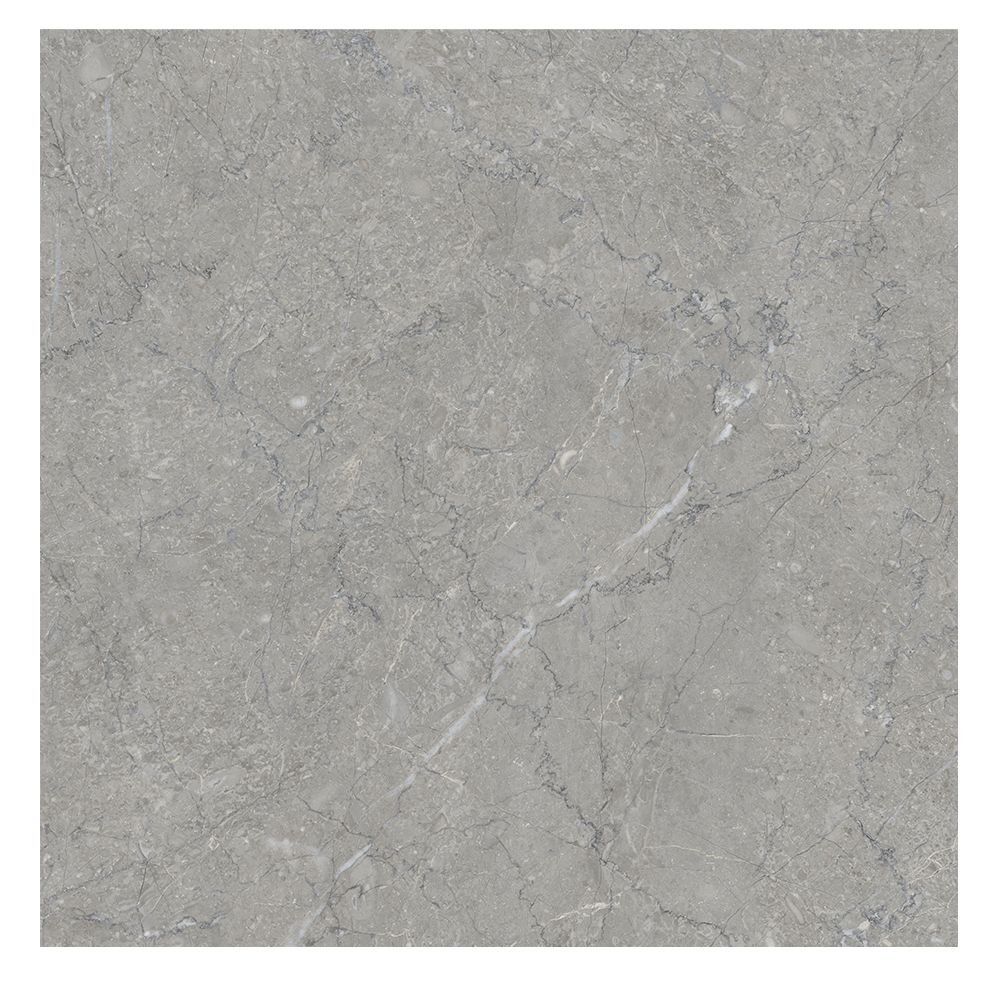 SINTETICO-GREY Marble Look Porcelain Tiles
SINTETICO-GREY Marble Look Porcelain Tiles -
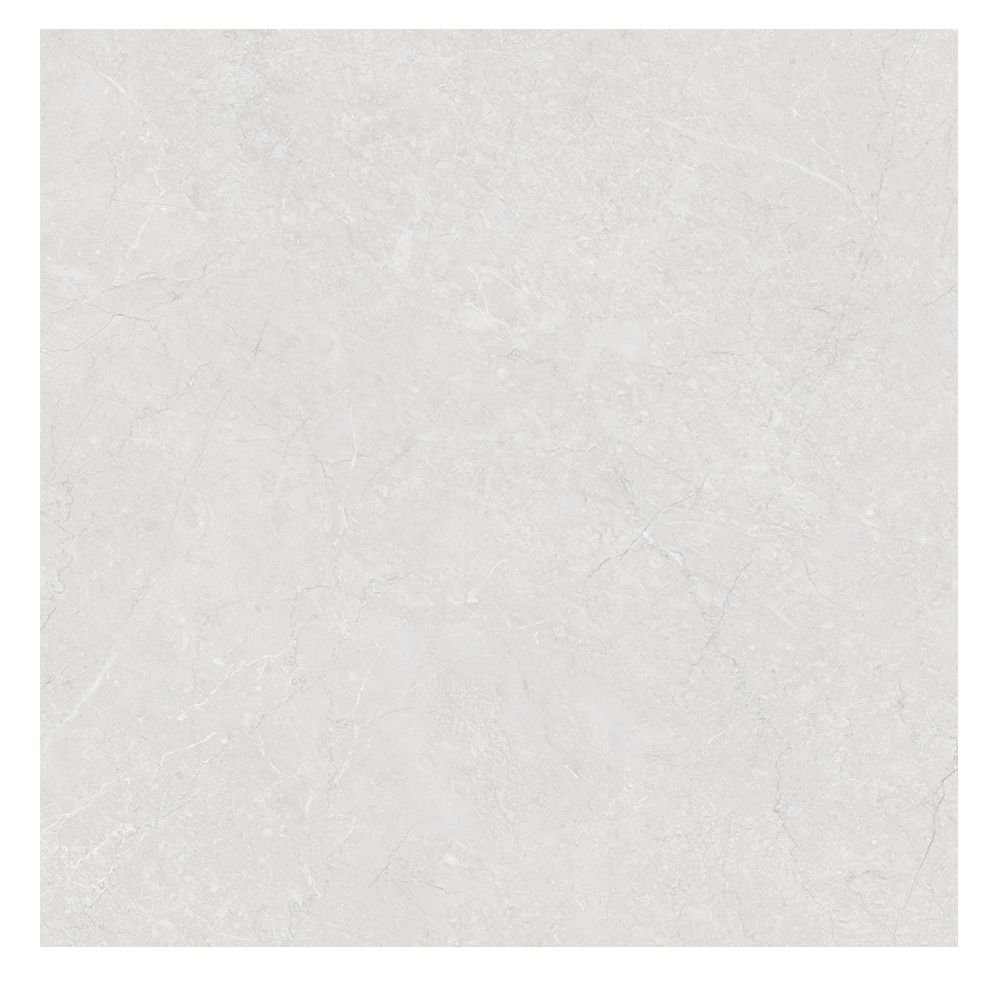 SINTETICO BIANCO Marble Look Porcelain Tiles
SINTETICO BIANCO Marble Look Porcelain Tiles -
 SAHARA-GREY Marble Look Porcelain Tiles
SAHARA-GREY Marble Look Porcelain Tiles -
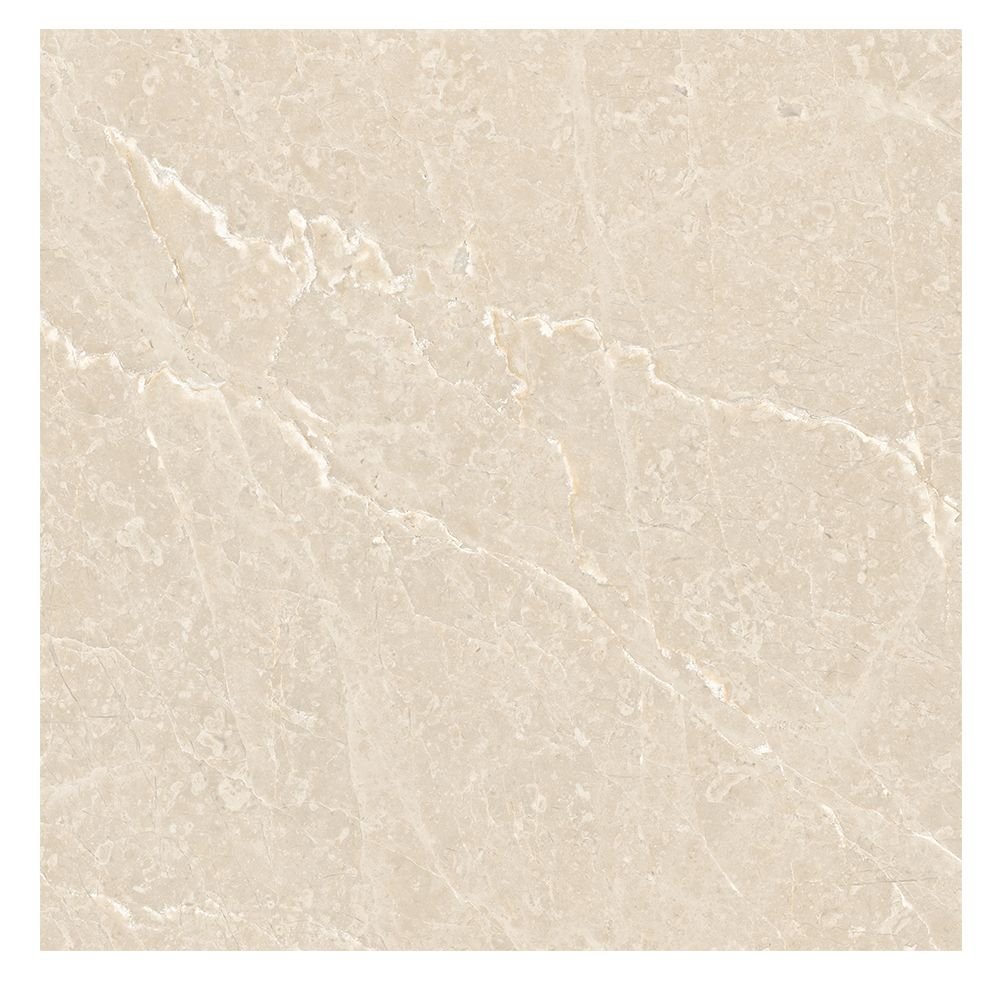 MYSTIQUE CREMA Marble Look Porcelain Tiles
MYSTIQUE CREMA Marble Look Porcelain Tiles -
 MONTERA RIO Marble Look Porcelain Tiles
MONTERA RIO Marble Look Porcelain Tiles -
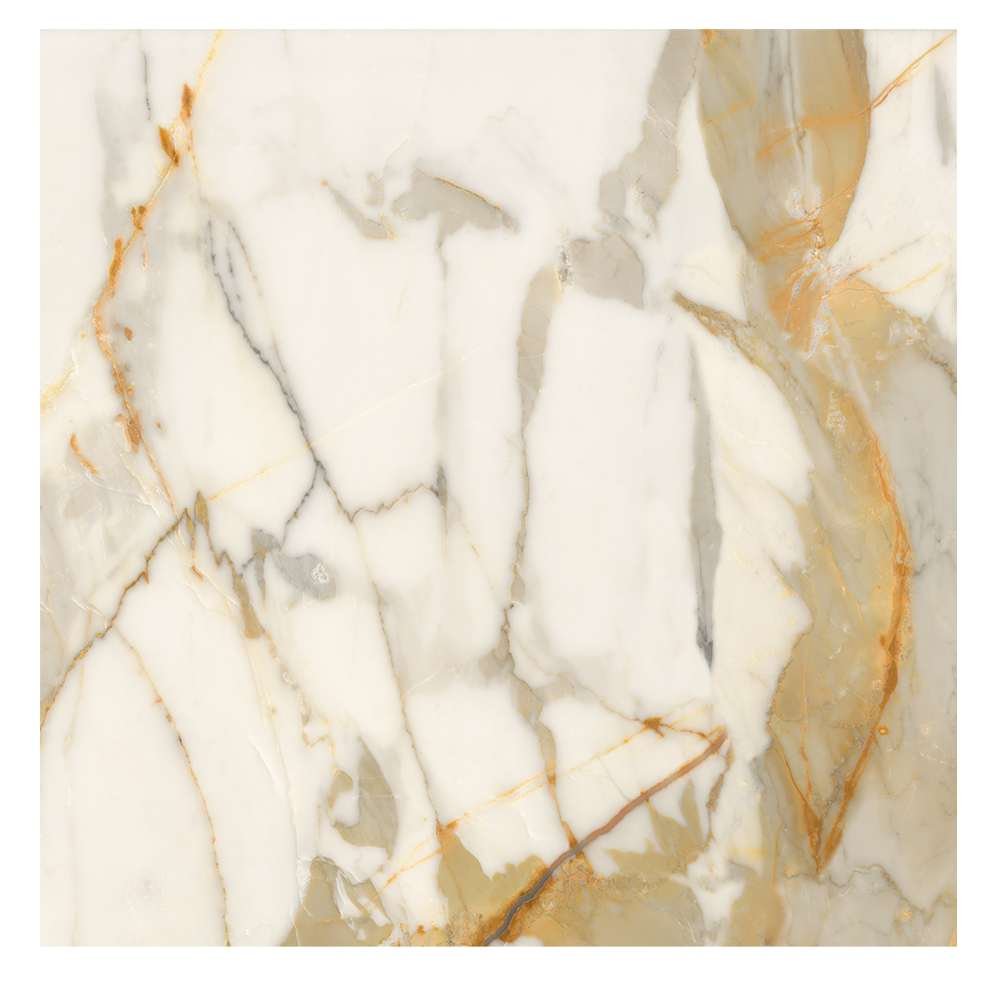 CALCATTA ORO Marble Look Porcelain Tiles
CALCATTA ORO Marble Look Porcelain Tiles -
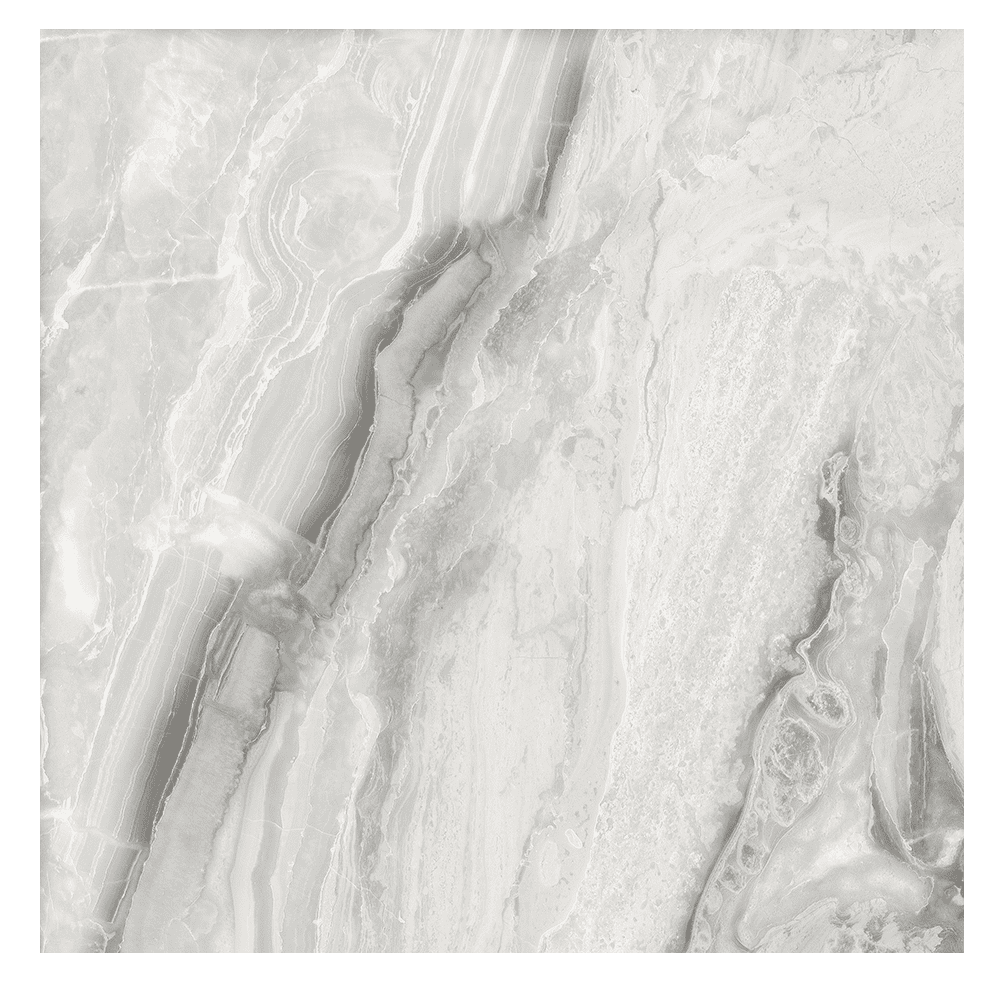 APEN SILVER Marble Look Porcelain Tiles
APEN SILVER Marble Look Porcelain Tiles -
 TERRAZZO BEIGE Marble Tile Design for Porcelain
TERRAZZO BEIGE Marble Tile Design for Porcelain -
 TROPICANA WHITE Marble Tile Design for Porcelain
TROPICANA WHITE Marble Tile Design for Porcelain
BONUS : Here’s what Elon Musk’s New Solar tiles will look like
Why Should You Trust us?
Here’s what you get out of our article. Our team have various Ceramic Experts with experience of more than 25 Years, researches on problems our customer faces in tiling industry.
Ramirro Ceramica, – One of The Leading Tiles Manufacturer and Supplier globally, helps you people gain knowledgeable insight before making your purchase decision for products related to the floor and wall tiles.
So, we have closely monitored all kinds of trends in the ceramic tiles manufacturing world, from the old days of clay and plain color to modern digital, realistic-looking designs printed on ceramics with high-depth effects.
Our tiling Experts have seen thousands of different tiles patterns, sizes, materials, pricing, and installation techniques throughout their career.
Their expertise shared with you in simplified and organised way, helps you choose and make better decision before purchasing any flooring option available in market.
Brief about Company:
Ramirro is one of the finest Tiles manufacturers in India manufacturing porcelain and ceramic tiles. Our products have a variety of sizes and types of tiles ranging from Ceramics, porcelain, Full body etc. This helps you choose the perfect fit for your project. Plus, our collection will help you get inspiration from the architect’s design.
Here’s some more helpful links that showcase our users trust on Ramirro Ceramica Brand:
– Growth in International Market
– Trusted and Licensed Exporter
– Manufacturing Plant in India
Here’s our social proof by LinkedIn competing with top known global tiling brands:







